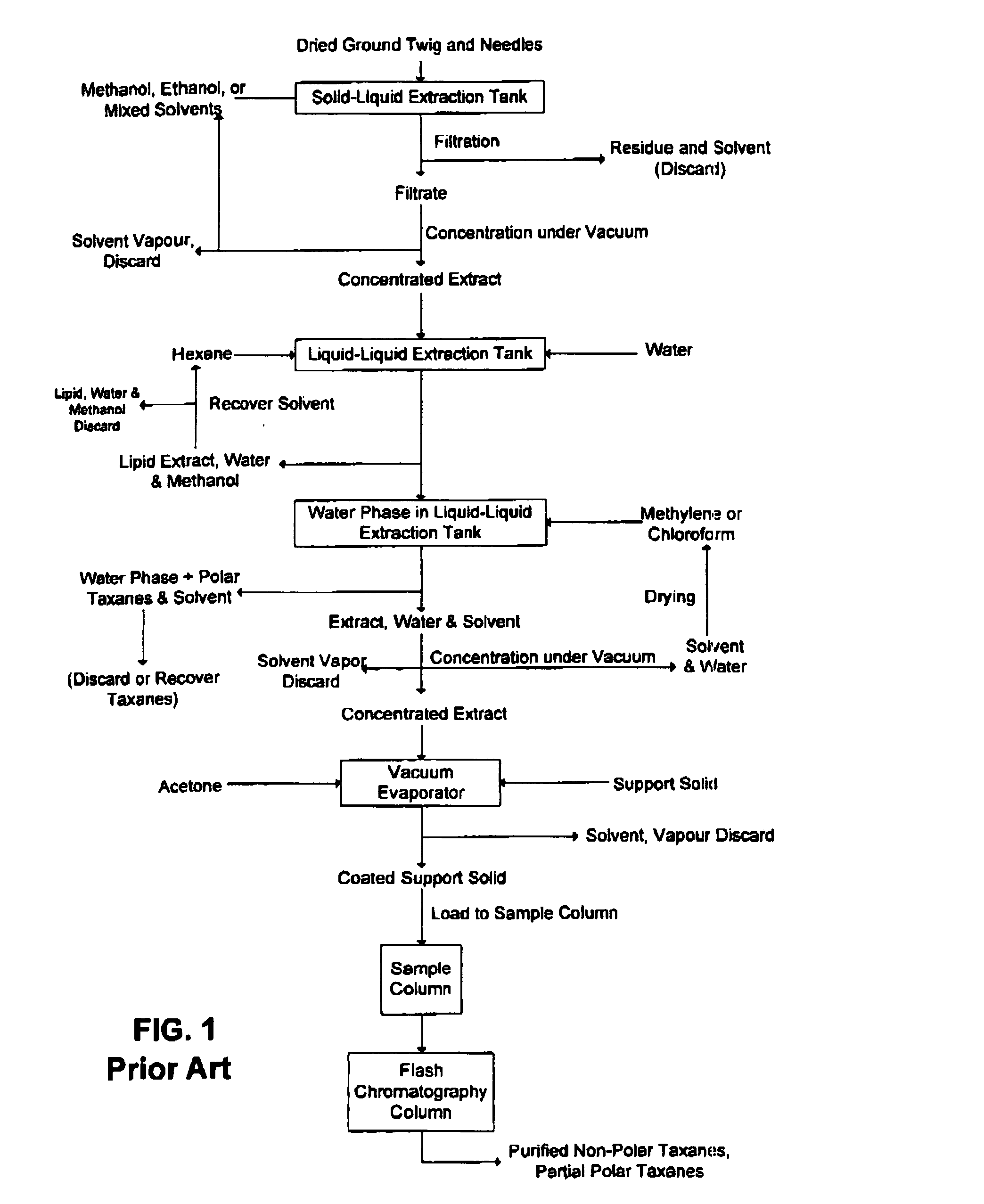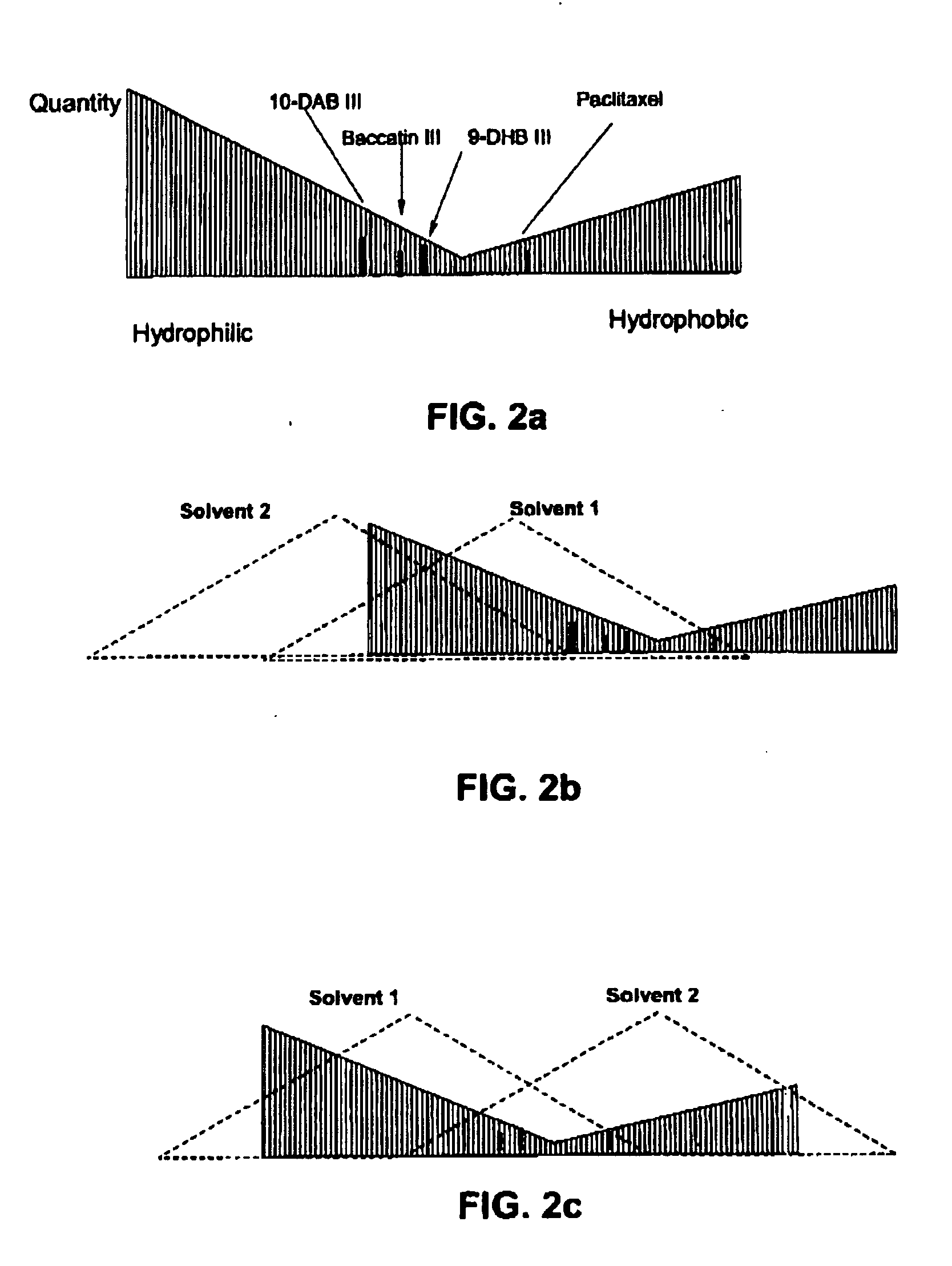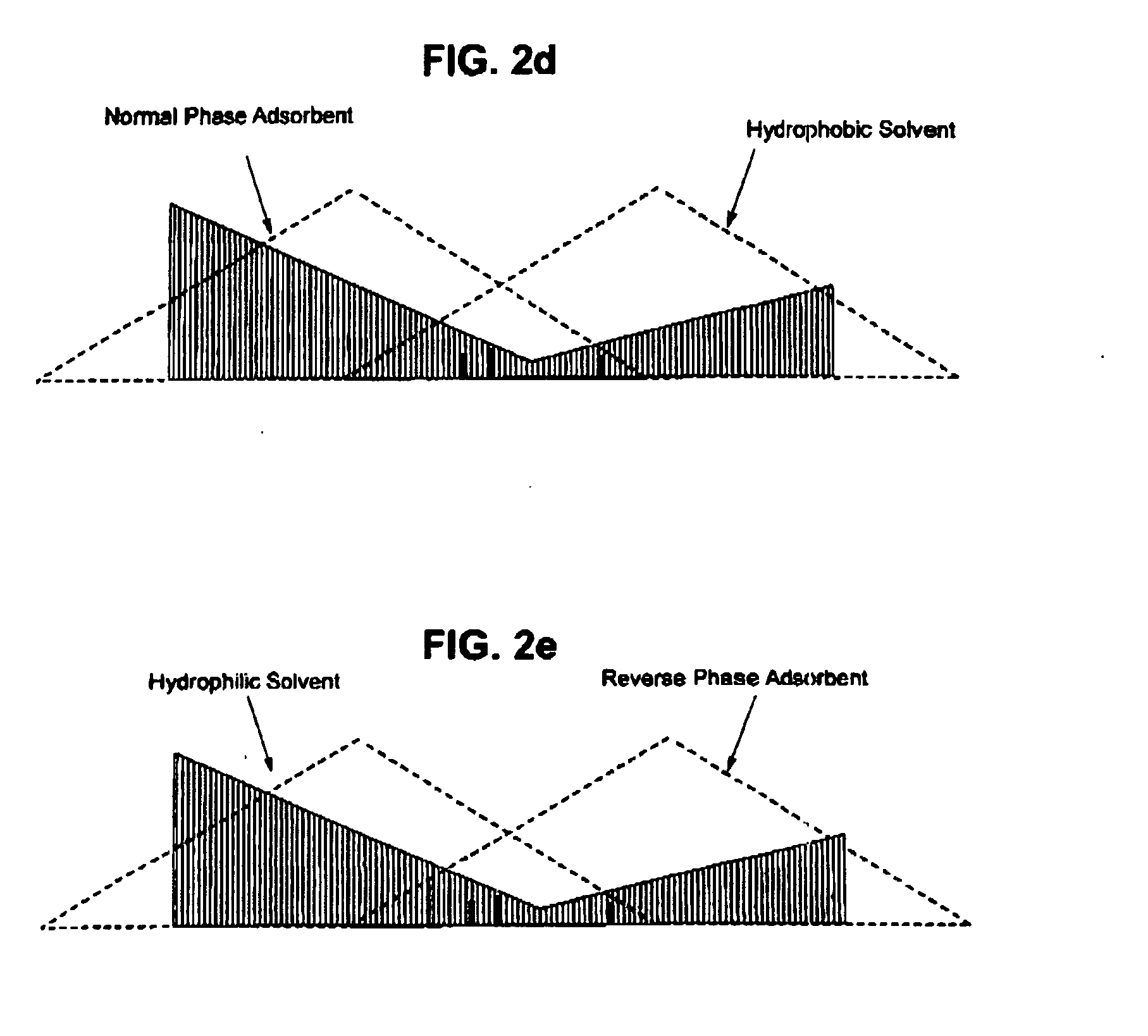Process for extracting taxanes
a technology of extraction process and taxane, which is applied in the direction of solvent extraction, organic chemistry, solid sorbent liquid separation, etc., can solve the problems of large amount of organic solvent required for such extraction, ineffective commercial production, and often the limitation of extraction mass production
- Summary
- Abstract
- Description
- Claims
- Application Information
AI Technical Summary
Benefits of technology
Problems solved by technology
Method used
Image
Examples
example i
[0059] Fresh twig and needles of Taxus canadensie were picked at Hartland and Rexton, New Brunswick, Canada in May, 2003. After drying for 7 days in darkness at ambient temperature and humidity, the needles were stripped manually from stems and ground to a powder with particles finer than 20 mesh. The ground needle powder was refrigerated at a temperature below −10° C. Just prior to the experiment, the ground needle powder was ground once more in a standard household coffee mill (Type 4041, Model KSM2™ by Braun), sieved and dried at 60° C. for 4 hours in an air ventilation dryer with digital temperature control (Fisher Scientific, Model 737F™). The sieved needle powder was then mixed thoroughly to obtain homogenous needle powder.
[0060] All solvents used in the experiment were HPLC trade (EM Science, Gibbstown, N.J.). Silica gel particles between 32 and 63 μm, (Fisher Scientific, Selecto Scientific, Georgia, USA), were used, without any further treatment.
[0061] Dynamic Pressurized ...
example ii
[0068] The process of Example I was repeated, with the following exceptions: [0069] 1. The needle powder was extracted by DPLE with hexane for 30 min at 90° C. to remove lipids. [0070] 2. Dichloromethane was used as the solvent to extract taxanes from the pre-treated needle powder. [0071] 3. The resultant green precipitate was dissolved in dichloromethane extract. [0072] 4. The dichloromethane extract was left in the fume hood for 12 hours to remove solvent.
[0073] The solid in the dichloromethane extract was analyzed with HPLC. There was found to be 1789 μg paclitaxel, 3120 μg of 10-DAB III, 105 μg of Baccatin III and 3216 μg of 9-DHB III in the solid.
example iii
[0074] The process of Example II was repeated, with the following exceptions: [0075] 1. 5,000 g silica gel was weighed and packed in a Normal Phase Solid Phase Extraction (NP-SPE) column 6, as illustrated in FIG. 6. [0076] 2. Dichloromethane extract was fed into the NP-SPE column 6 instead of being collected with test tubes. [0077] 3. The eluate from the NP-SPE column 6 was collected in a Petri dish and dried in a fume hood for 12 hours. The solids in the Petri dish were dissolved in methanol for HPLC analysis after filtration through a 0.45 μm filter.
[0078] No taxanes were detected in the eluate from the NP-SPE column 6. In comparing this result to that of Example II, all of the taxane was collected within the NP-SPE column 6.
PUM
| Property | Measurement | Unit |
|---|---|---|
| temperature | aaaaa | aaaaa |
| temperature | aaaaa | aaaaa |
| temperature | aaaaa | aaaaa |
Abstract
Description
Claims
Application Information
 Login to View More
Login to View More - R&D
- Intellectual Property
- Life Sciences
- Materials
- Tech Scout
- Unparalleled Data Quality
- Higher Quality Content
- 60% Fewer Hallucinations
Browse by: Latest US Patents, China's latest patents, Technical Efficacy Thesaurus, Application Domain, Technology Topic, Popular Technical Reports.
© 2025 PatSnap. All rights reserved.Legal|Privacy policy|Modern Slavery Act Transparency Statement|Sitemap|About US| Contact US: help@patsnap.com



